 |
Epoxidized Soybean Oil E-10 HS Code : 1518000000 Payment Terms : L/C,D/A,D/P,T/T,O/A E-mail:inquiry@foodchem.cn |
Specification
| Items | Standard |
|---|---|
| Color(Pt-Co) | ≤150# |
| Specific Gravity(20°C) | 0.990±0.008 |
| Epoxy Value | ≥6.0% |
| Residual Iodine | ≤5.0% |
| Acid Value | ≤0.5mg/g |
| Flash Point | ≥280°C |
| Heat loss (125 °C, 2hr) | ≤0.3 |
| Heat stability (177°C,3hr) | ≥5.7(95%) |
Why choose Foodchem
• Wholly owned production plant (1200㎡)
• High quality products, complying with BP/USP/FCC/EU standard
• TOP 10 Food enterprise in China
• Halal, Kosher, ISO 9001 certified
• 200 products with competitive price
• FCL, 2-5mt LCL, long contract, year contract available
• Sales to more than 70 countries
FAQ
* What credentials can be provided from FOODCHEM?
FOODCHEM is through ISO2008 9001 certified company for the Epoxidized Soybean Oil, we can provide HAPPC, KOSHER, HALAL certificate.
* How long can you get reply?
FOODCHEM is very focused on the efficiency of the company, the customer’s requirements do not consult us must reply to a weekday.
* What is Epoxidized Soybean Oil minimum order quantity?
Different products have different MOQ, Epoxidized Soybean Oil from the amount of 500 kg, our customers are overseas distributors and food processing plants, for home use and a small amount of experimental use, please contact your local distributor.
* what kind of payment can be accepted by FOODCHEM?
The most common method of payment is T / T, L / C, D / P, D / A, O / A, and so on.
* How much are Epoxidized Soybean Oil?
Foodchem is China’s leading Epoxidized Soybean Oil manufacturers and traders, engaged in the production and trade Epoxidized Soybean Oil has 10 years of history, we can provide the most cost-effective Epoxidized Soybean Oil for you.
* what document can be provide from FOODCHEM?
Under normal circumstances, we provide commercial invoices, packing slips, bills of lading, COA, health certificate and certificate of origin. If you have any special requirements of the market, please contact us.
* Is FOODCHEM a manufacturer or trader?
Foodchem both the manufacturer and also traders, FOODCHEM before China Food Additives three traders, some of which are also products of our own generation, for example: gelatin.
You may also be interested in :
DL Tartaric Acid E334 Polyphosphoric Acid Agar Agar Powder (1000Cps)

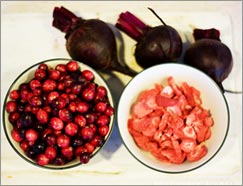 Natural food colors refer to the dyes obtained from vegetables, animals or minerals, capable of coloring food, drugs or cosmetics. The name ‘natural food colors’ stands correct as all these natural food colors are obtained using only naturally available products. Usually they are extracted from natural things like seeds, fruits, vegetables, leaves, insects, algae, etc.
Natural food colors refer to the dyes obtained from vegetables, animals or minerals, capable of coloring food, drugs or cosmetics. The name ‘natural food colors’ stands correct as all these natural food colors are obtained using only naturally available products. Usually they are extracted from natural things like seeds, fruits, vegetables, leaves, insects, algae, etc.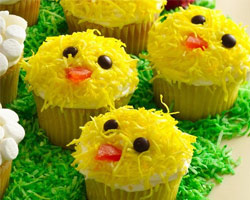












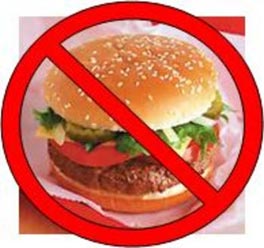

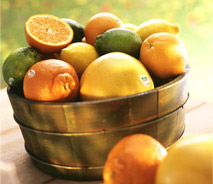 August 30, 2010- Citric acid, E 330, with its sour taste is quite a liked flavor in our everyday foods consumption. A weak organic acid, citric acid works as a natural preservative, that is a part of the majority of packaged foods available in the market. Apart from being a preferred natural preservative, it is also a popular flavor enhancer for food and beverages. Specially the cold drinks that we consume with almost every alternate meals, contain citric acid majorly.
August 30, 2010- Citric acid, E 330, with its sour taste is quite a liked flavor in our everyday foods consumption. A weak organic acid, citric acid works as a natural preservative, that is a part of the majority of packaged foods available in the market. Apart from being a preferred natural preservative, it is also a popular flavor enhancer for food and beverages. Specially the cold drinks that we consume with almost every alternate meals, contain citric acid majorly.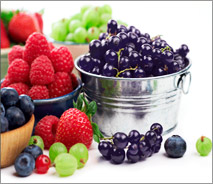 Of citrus fruits the ones that contain lesser amounts of citric acid are the berries and a few vegetables. All kinds of berries like the cranberry, raspberry, strawberry, blackcurrant, redcurrant, gooseberries, cherries; all of them are citric acid sources and citric juice foods. Other exotic citric juice fruits are pineapple and tamarind. Among the vegetable citric acid sources, tomatoes and lettuce also contain citric acid in small amounts.
Of citrus fruits the ones that contain lesser amounts of citric acid are the berries and a few vegetables. All kinds of berries like the cranberry, raspberry, strawberry, blackcurrant, redcurrant, gooseberries, cherries; all of them are citric acid sources and citric juice foods. Other exotic citric juice fruits are pineapple and tamarind. Among the vegetable citric acid sources, tomatoes and lettuce also contain citric acid in small amounts.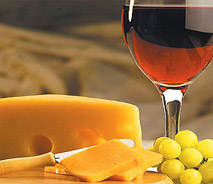 Most of cheese varieties contain citric acid as it is a fermentation by product. It is a sure by product of the industrial cheese making processes, but as for the natural cheese making process, nothing can be said with surety. As a fermentation by products, the citric acid foods are all industrially produced varieties of cheese, wine and sourdough breads.
Most of cheese varieties contain citric acid as it is a fermentation by product. It is a sure by product of the industrial cheese making processes, but as for the natural cheese making process, nothing can be said with surety. As a fermentation by products, the citric acid foods are all industrially produced varieties of cheese, wine and sourdough breads.